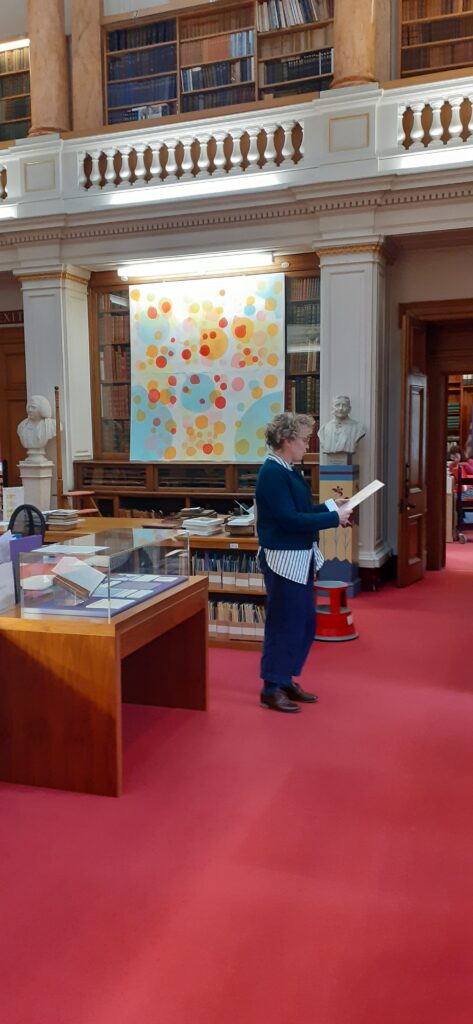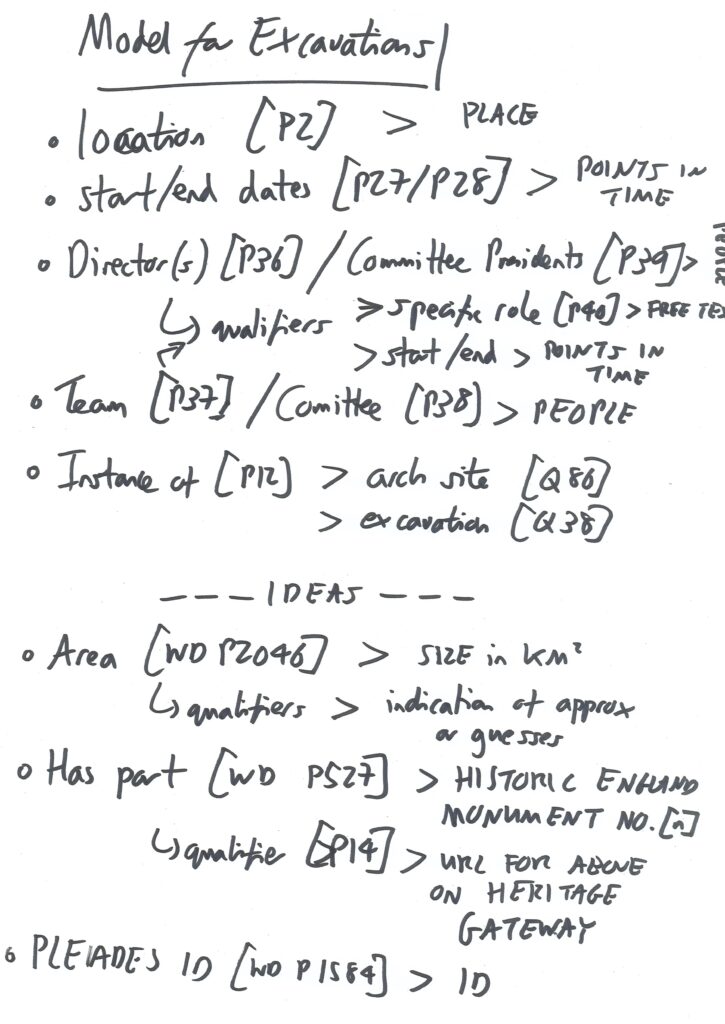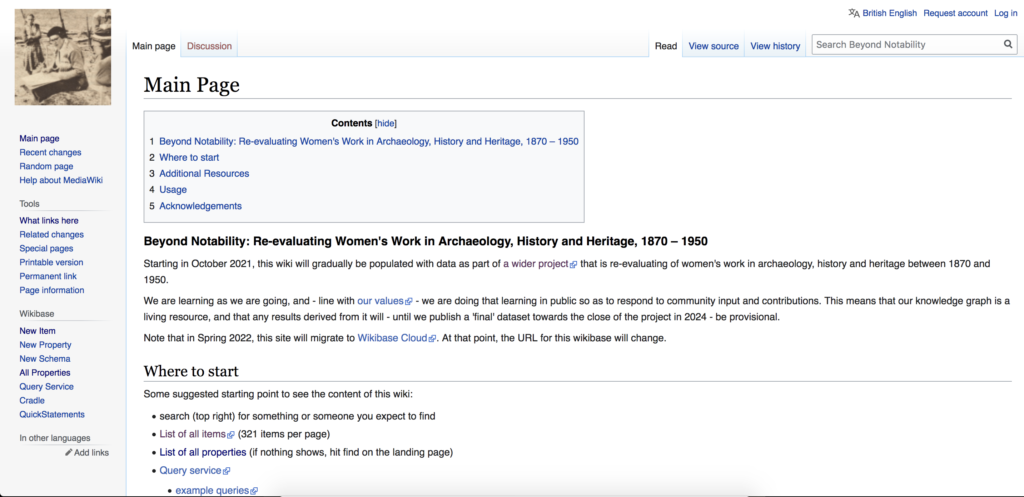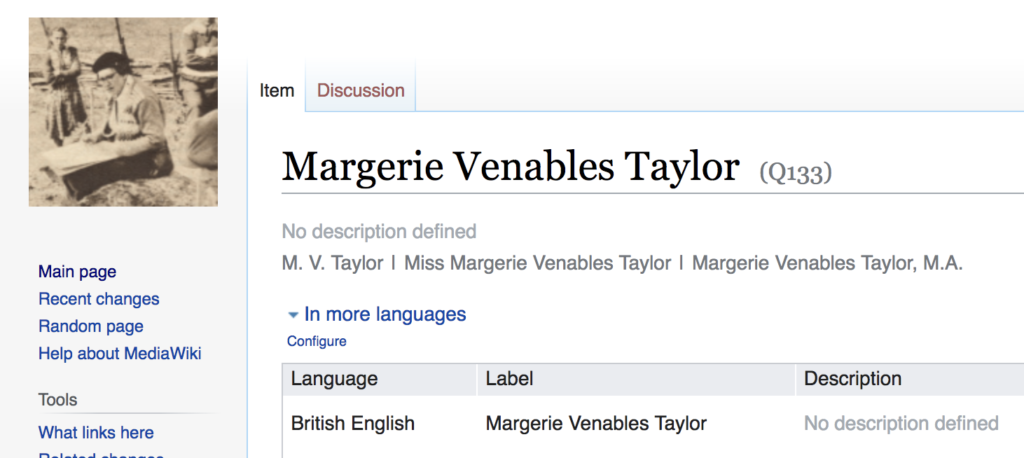By Amara Thornton (Co-Investigator)
I first came across “Miss Moulton Barrett” in the summer of 2020 as I started exploring the history of archaeology in the Caribbean. Her name was mentioned in connection to a late 19th century excavation at an estate called Retreat or Retreat Pen(n) in St Ann’s, Jamaica. Retreat had been owned by a “Mr Moulton Barrett” and “Miss Moulton Barrett” had conducted excavations there. I dug around for more information (online, it was during lockdown). I happened upon a digitised and text-searchable copy of Jeanette Marks’ 1938 book The Family of the Barrett: a colonial Romance, charting the family history of famous Victorian poet Elizabeth Barrett Browning. A sentence in this book stopped me in my tracks:
“[…] there was born to Charles John [Moulton Barrett, EBB’s brother] by a woman of colour, a child.” (p 612)
Another child followed a few years later. Two daughters, Eva and Arabel, both born to Charles John Moulton Barrett and Elizabeth Barrett. Both Eva and Arabel grew up at Retreat in the late 19th century. These two girls were the Mixed-heritage Jamaican nieces of Elizabeth Barrett Browning.
I wasn’t sure whether Eva or Arabel was the “Miss Moulton-Barrett” of the archaeological reports I’d been looking at. But as I pursued my enquiries, I contacted the staff of Eton College Collections where the Moulton-Barrett family papers are held. They informed me that the “Miss Moulton Barrett” I was investigating was most likely Arabel – in 1880 Eva married John Casserly (listed on their marriage certificate as a planter living at Oxford Estate, Trelawny). Even more thrillingly, in looking through the archive on my enquiry the Eton College Collections staff had discovered six letters (written from Jamaica by Arabel (“Bel”) Moulton-Barrett to a relative (Edward F. Moulton Barrett, or “Edward of Albion” as she addresses him). The letters held at Eton College were written between 1945 and 1953. Arabel Moulton-Barrett was by then a very elderly woman, and one of Jamaica’s most celebrated women poets.
In the 1890s, during an explosion of archaeological work in Jamaica, the Jamaica Gleaner published a report on the discoveries “Miss Moulton-Barrett” had made during her informal excavations at Retreat Pen. This report included a short description in her own words. By this time, she had loaned some of the artefacts discovered for display in a well-publicised exhibition on Jamaica’s pre-Columbian past, held in late 1895 at the Institute of Jamaica.
We added “Miss Moulton Barrett” to our database early in the Beyond Notability project (find her entry here). Her engagement in archaeology reflects a wider colonial context which we are mapping (including women with ancestors appearing in the Legacies of British Slaveownership database, listed here). But Arabel’s story and her letters are also particularly intriguing for me personally, as a Mixed-heritage researcher with close family ties to the Caribbean.
Arabel Moulton-Barrett’s engagements with archaeology also highlight an important element of the context of women’s work in archaeology, history and heritage in Britain: empire. As a team, we are continuing to discuss how best to reflect and incorporate this imperial context into the database that forms a key part of our research project. Through the project we want our database to be a framework and a model for situating these historic engagements with archaeology, history and heritage in Britain (as we know it today) alongside similar work happening within the British empire broadly conceived.
The paragraphs that follow explore three aspects of Arabel Moulton-Barrett’s story: her family background, the context of her archaeological work (assuming that Arabel Moulton-Barrett is the same person as “Miss Moulton Barrett”), and her later life. I refer to the letters held by Eton College throughout the piece. Written at the end of her life, when she was reflecting on her childhood and her childhood home, they are a poignant insight into her memories. While she doesn’t discuss her archaeological work explicitly in the letters, she does reveal the special place Retreat Pen, her childhood home, held in her heart.
The Family
The Barrett family had been associated with Jamaica since the 18th century, holding plantations across several parishes, including St Ann’s and Trelawny. While some members of the family resided in Jamaica others like Arabel Moulton-Barrett’s paternal grandfather Edward Barrett, lived in Britain. Edward Barrett received thousands of pounds worth of compensation after the abolition of slavery. His son Charles John (known within the family as “Storm”), had moved from Britain to Jamaica to manage Barrett estates as a resident proprietor. These estates included Retreat Pen, “The Retreat”, the plantation between Brown’s Town, St Ann’s and Stewart Town, Trelawny. Arabel’s mother Elizabeth Barrett was herself a Mixed-heritage woman. Arabel noted in a letter (2 Feb 1945) that Elizabeth’s father was Charles John’s “uncle Sam”, making Elizabeth and Charles John cousins. Arabel did not mention the name of her maternal grandmother, though she appears to have known her.
In the six letters held at Eton, Arabel discussed her parents’ relationship in some detail. She emphasised their love for each other and mourned the fact that they had been prevented from marrying. Almost defiantly she wrote
“I consider myself as more truly born of wedded parents than any other woman whose mother bears a wedding ring”
“Bel” Moulton-Barrett to “Edward of Albion” 2 February 1945
Arabel revealed that Charles John gave Elizabeth a house and land in Stewart Town, Trelawny, bordering St Ann’s to the west. She noted that Elizabeth had acquired an education on her own, and “had a nice little library – theology, travel, autobiography & poetry were all represented.” (2 Feb 1945)
Arabel and her sister Eva were brought up by Charles John at Retreat Pen – “my beloved home” Arabel called it (7 March 1956). Of Charles John’s parenting Arabel stated
“He did the right and honourable thing acknowledging his two little daughters. No father could have done more than he did […]”
“Bel” Moulton-Barrett to “Edward of Albion” 2 February 1945
According to Jeanette Marks the girls were educated in France. Charles John, Eva and Arabel travelled to Britain in 1867; Arabel recalled her visit to her uncle by marriage Robert Browning at his home in London in one letter, describing his voice as “Deep – rich – full” (2 Dec 1952). By the 1870s financial disaster loomed. Charles John’s brother Septimus was heavily in debt. Arabel recounted how Charles John spent all of his money and sold all the family properties clearing Septimus’s debt to save the Barrett name (30 Apr 1950). According to the Jamaica National Heritage Trust’s 2019 Archaeological Impact Assessment, Retreat Pen was sold in 1893. The only part of the estate that was not sold was the burial ground – this, Arabel noted in a letter, “still belongs to me.” (5 April 1950)
Arabel Moulton-Barrett’s complex family history encapsulates both the context of sexual exploitation of Black and Mixed-heritage women by White planters during the era of slavery, and the lives of the resulting Mixed-heritage population in the period after slavery. Some of these Mixed-heritage descendants, including Arabel, led relatively comfortable lives with the time to devote to intellectual pursuits.
Archaeology, Tourism and Jamaica
It is not clear exactly when Arabel Moulton-Barrett undertook her investigations of the mounds at Retreat, though it took place before the estate’s sale in 1893. By this time interest in Jamaica’s pre-Columbian past had intensified, tied to the colonial government’s plans for increasing tourism to the island.
In the late 1880s and 1890s, Jamaica had as its Governor one Henry Blake, who had joined the colonial service from a post in the Irish Constabulary. Before coming to Jamaica, he had been Governor in the Bahamas and (briefly) Newfoundland. Henry Blake was married to Edith Bernal Osborne, an artist and writer with a deep interest in archaeology (find her entry in our database here).
As Governor, Henry Blake wanted to put Jamaica on the map, drawing tourism and other development opportunities to the island. He worked to facilitate a large-scale international exhibition held in Jamaica in 1891. Edith Blake also took part in this work. In addition, she was increasing her own collection of Caribbean antiquities, writing and publishing on the history and archaeology of the Caribbean, and conducting her own explorations of sites.
The Blakes were involved in the Institute of Jamaica, a learned society which by the mid-1890s had begun to encourage and lead formal archaeological investigations . In 1895, Institute of Jamaica curator J. E. Duerden organised the “Anthropological Exhibition”, borrowing artefacts from collectors in Jamaica and beyond for the display. In a volume of the Institute’s Journal Duerden recorded the efforts of these resident collectors and excavators, including Edith Blake and Arabel Moulton-Barrett.
Duerden’s report makes clear that Arabel Moulton Barrett’s exploration at Retreat Pen centred around two hills connected by a ridge. These had once been fields enslaved workers had farmed for their sustenance – among them, possibly, Arabel’s maternal ancestors. In her notes on the work, published in the Gleaner and reprinted in Duerden’s report, Arabel recorded that the ridge featured small mounds where pieces of pottery described in the Gleaner as “of the same type as the aboriginal examples obtained elsewhere”, the bones of coneys (a mammal similar to a rat), and pieces of shell were recovered at and just below surface level. It would probably have been estate workers, under Arabel’s direction, who dug below the surface on the ridge. The Institute of Jamaica subsequently organised further investigations of the site, and Duerden reported that the previous cultivation of this area by enslaved people had resulted in damage to the mounds in question. It is entirely possible that the enslaved population working in the fields before Arabel’s explorations had themselves discovered further evidence of Indigenous life. A West India Company soldier who collected ancient stone tools in Falmouth, Jamaica in the 1860s noted in a report that formerly enslaved people had first recovered many of these tools.
Later Life: Arabel, the Published Poet
The 1893 sale of Retreat Pen seems to have ended Arabel Moulton-Barrett’s archaeological investigations. Perhaps, as she no longer had access to the family property, there was no opportunity for her to continue her interests. And her father’s impoverished circumstances must have played some part. She stoically references her long-standing financial worries, which were eased to some degree by her father’s brothers after his death. “I have had to work hard all my life” she noted “but work is good for body and mind.” (30 April 1950). By 1913 she was living in Kingston, and it was there that she won first prize in a poetry competition. Her poetic response to the competition’s set question, “If I Were Governor”, was printed in the Gleaner in December 1913.
Between 1919 and 1925 three of Arabel’s short stories were published in The Catholic World. During the 1920s, she became more involved in the literary scene in Jamaica, and her work was included in the 1929 anthology Voices from Summerland, published in London but representing the work of the Jamaica branch of the Empire Poetry League. She continued to be a part of the Jamaican poetry league through the 1930s and 1940s, her poems published in League “Year Book” anthologies of 1940 and 1941, alongside the verses of many others, including Tom Redcam, Astley Clerk, Lena Kent and Constance Hollar. Her poem “The Lost Mate” (published in Voices from Summerland) features in a 1950 Anthology of the poetry of the West Indies.
Impoverished and suffering with loss of vision towards the end of her life, she records in a letter in the Eton collection (30 Apr 1950) that a group of writers had clubbed together to send her badly needed funds. She died soon after the letter was written. I hope she is buried in the family burial plot at Retreat as she wished, “close to my beloved father” (5 April 1950).
Acknowledgements
Thanks are due to Stephie Coane, Michael Meredith and Laura Carnelos, Katherine Harloe and Debbie Challis. Text of Arabel Moulton-Barrett letters reproduced by permission of the Provost and Fellows of Eton College.
References/Further Reading
Cuming, H. Syer. 1868. Proceedings of the British Archaeological Association. Journal of the British Archaeological Association 24 (4): 391-404.
Duerden, J. E. 1896. Jamaican Anthropology. Discovery of Aboriginal Shell Mounds in St Ann and St James. Jamaica Gleaner, 21 February, p 4.
Duerden, J. E. 1897. Aboriginal Indian Remains in Jamaica. Journal of the Institute of Jamaica 2(4).
Green, Cecilia A, 2006. Hierarchies of Whiteness in the Geographies of Empire: Thomas Thistlewood and the Barretts of Jamaica. New West Indian Guide 80 (1/2), 5-43.
Institute of Jamaica, 1896. Annual Report on the Institute of Jamaica for the year ended 31st March, 1896. Kingston, Jamaica: Institute of Jamaica.
Jamaica Gleaner, 1913. ‘If I Were Governor.’ An Interesting Subject that attracted a good many competitors: Miss Arabel Moulton Barrett Secures First Prize. 13 December, p 7.
Jamaica National Heritage Trust Archaeological Division, 2019. Archaeological Impact Assessment, p 35.
Marks, Jeannette Augustus, 1938. The Family of the Barrett: A Colonial Romance. New York: The Macmillan Company.
McFarlane, J. E. Clare, 1945. The Challenge of Our Time: A Series of Essays and Addresses. Kingston, Jamaica: New Dawn Press.
Modest, Wayne, 2018. ‘A Period of Exhibitions’: World’s Fairs, Museums, and the Labouring Black Body in Jamaica. In Tim Barringer and Wayne Modest (Eds.). Victorian Jamaica. (pp. 523-550). Durham, NC: Duke University Press.
Moulton-Barrett, Arabel, 1919. ‘Melia. Catholic World, CVIII, 517-525.
Moulton-Barrett, Arabel, 1920. The Little Brown Bird. Catholic World, CX, 29-36.
Moulton-Barrett, Arabel, 1925. The Star-Child. Catholic World, 228-236.
Moulton-Barrett, Arabel, 6 letters to Lt Col E. F. Moulton Barrett, 1945-1953. MS 681 01 02 03: Eton College Collections.
Poetry League of Jamaica, 1940. Year Book of the Poetry League of Jamaica. Kingston, Jamaica: New Dawn Press.
Poetry League of Jamaica, 1941. Year Book of the Poetry League of Jamaica. Kingston, Jamaica: New Dawn Press.




